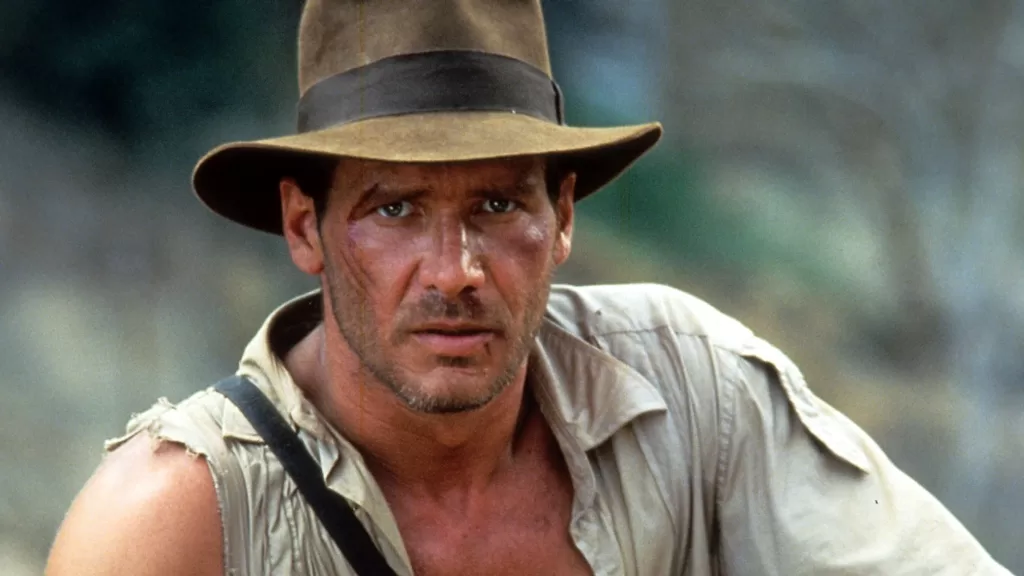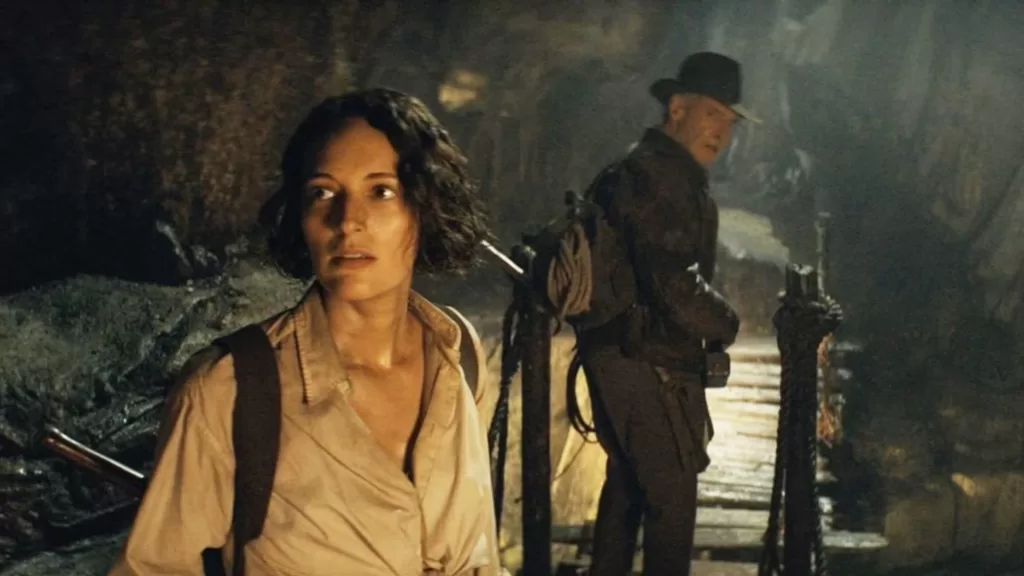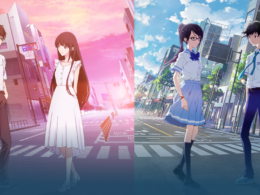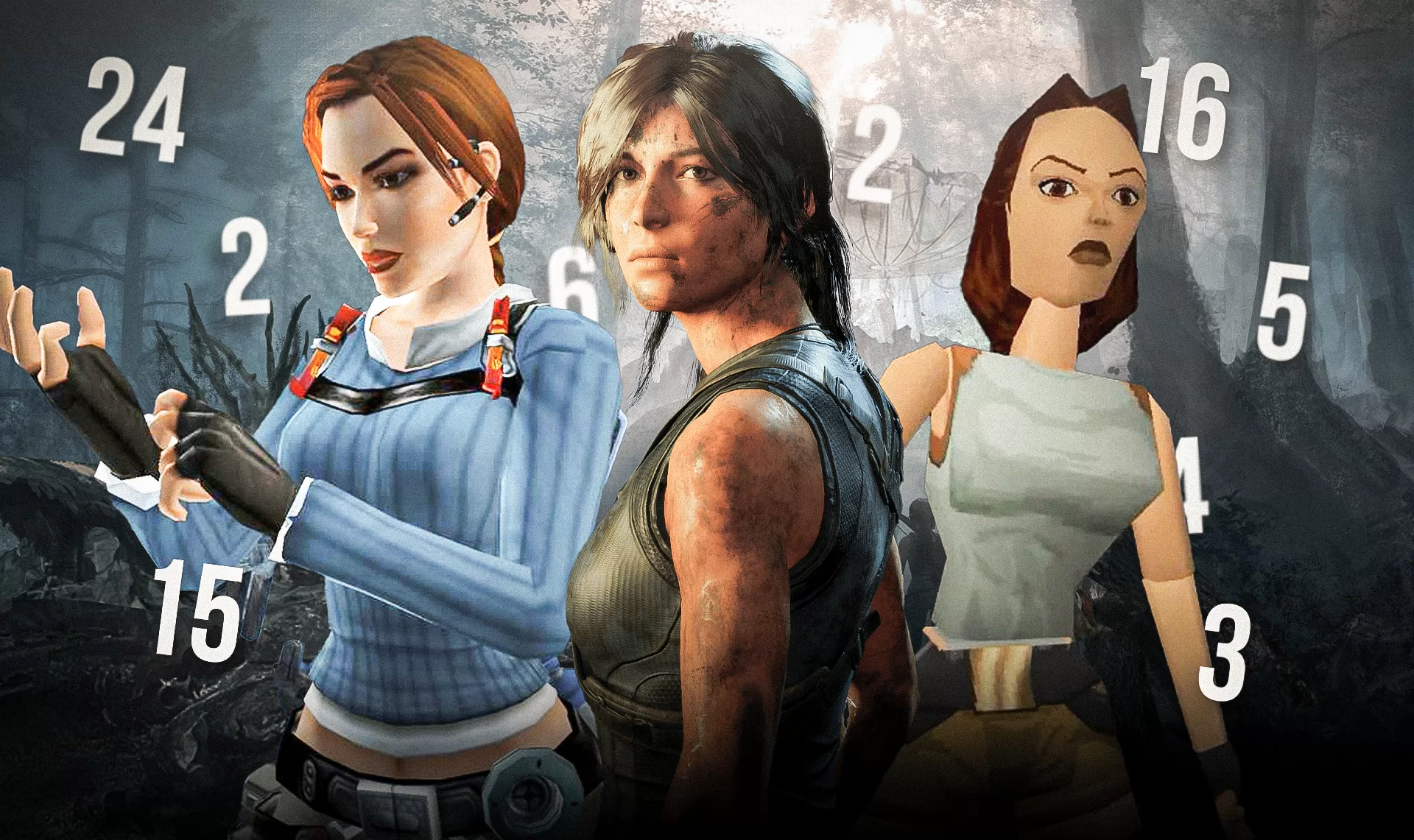A group of men venture through a dense, stifling South American jungle, animal cries piercing the thick, steamy air. They detect signs of a hidden enemy lurking among the trees. After some unfortunate shenanigans, they enter a tomb hidden among the foliage. Inside a trap-ridden hall is their prize: a golden idol on a stone plinth. The man replaces the idol with a bag of sand, triggering the tomb’s collapse. He runs for his life, a boulder chasing him back the way he came. He tumbles back outside to find an indigenous tribe standing over him, their spears leveled. Welcome to our hearts, Indiana Jones.
It has been 42 years since audiences worldwide first watched the opening scene of 1981’s Raiders of the Lost Ark. That scene, expertly filmed by legendary director Steven Spielberg, later became one of the most iconic opening scenes of all time. And it introduced millions to one of the most legendary film characters in history.
Introduction to Indiana Jones

Indiana Jones, played by film icon Harrison Ford, is a professor of archaeology and adventurer who travels the world to find ancient artifacts. He is handsome and charming, with bravery and intelligence to match. He’s also thoughtful, level-headed, and quick on his feet. And he hates Nazis with every fiber of his being. His only weaknesses? Snakes (“Snakes…why’d it have to be snakes?”) and beautiful women. He is a bit of a scoundrel, after all.
He first appears on the big screen in 1981 in Raiders of the Lost Ark and goes on to star in two more films in the 1980s: Indiana Jones and the Temple of Doom (1984) and Indiana Jones and the Last Crusade (1989). An ill-conceived fourth entry, Indiana Jones and the Kingdom of the Crystal Skull, followed in 2008. The fifth chapter, Indiana Jones and the Dial of Destiny, will conclude Indy’s big-screen adventures in the summer of 2023.
Created by George Lucas and directed by Steven Spielberg, the character of Indiana Jones is inspired by the adventure serials of the 1930s and 1940s, such as Flash Gordon and Buck Rogers. The character is also influenced by real-life archaeologists, such as Hiram Bingham, who discovered the ancient city of Machu Picchu.
Indiana Jones vs. Nazis

Throughout the Indiana Jones films, Jones squares off against the Nazis, the infamous political party known for their white supremacist beliefs and the murder of over six million Jewish people during the Holocaust.
In Raiders of the Lost Ark, the United States government hires Jones to find the Ark of the Covenant before the Nazis can get their hands on it. In the film, the Nazis believe the biblical artifact has supernatural powers that can make them invincible in battle. Despite Jones’ attempts to thwart the Nazis’ efforts, they obtain the Ark in the city of Tanis in the film’s final act. But their attempt to use the Ark backfires when they open it and are destroyed by its power in an iconic, face-melting climax that serves as one of the series’ most iconic moments.
Nazis, and mentions of them, return throughout the franchise. Indy decks a Nazi in the face in one of Raiders‘ most satisfying moments. They also kidnap his father in Indiana Jones and the Last Crusade, and it’s revealed in Kingdom of the Crystal Skull, set in 1957, that Jones is a former OSS agent who worked against the Nazis during World War II.
With the disturbing resurgence of real-life Nazism over the last decade, Jones remains as relevant as ever. The character serves as a reminder to hold the line in the face of racism and tyranny, and to fight back against those who wish to use their power and influence to harm others.
The success of Indiana Jones

After the release of Raiders of the Lost Ark, critics and fans praised the film for its action-packed scenes, memorable characters, and innovative cinematography. Stories of Indy’s adventures expanded beyond the big screen and soon found homes on television, as well as in books, comics, and video games.
His fedora and whip, first seen in Raiders’ opening scene, have become synonymous with the character. Indy’s whip is as intrinsic to his character as the lightsaber is to Luke Skywalker, or the vibranium shield is to Captain America. The tool and weapon, which Indy uses to swing across gaps and fight off enemies, symbolize the character’s bravery and resourcefulness.
The hat and whip have become so popular that they have been featured in countless other films and television shows, as well as in advertisements and merchandise. Even the character’s theme music, composed by the legendary John Williams, is one of the most recognizable movie themes of all time. But the character’s pop culture significance doesn’t end there.
Indiana Jones’ Impact on Pop Culture

Raiders and its sequels were a watershed franchise in Hollywood and helped popularize the adventure film genre. Over the next several decades, more swashbuckling adventurers followed Indy’s lead.
In the fall of 1996, video game developers Core Design released Tomb Raider, starring adventurer and archaeologist Lara Croft. Core’s original intent was to create a male action hero, but their first creation resembled Indiana Jones so much that they feared getting sued. After redesigning the character, they eventually created Croft, a devil-may-care British aristocrat who possesses many of Indy’s signature traits: swagger, intelligence, bravery, and wry sense of humor.
Hallmarks from Indy’s adventures, including boulder and dart traps, are commonplace in Tomb Raider. Several games in the franchise feature moments where Lara must take a leap of faith and walk across invisible platforms, as seen in Indiana Jones and the Last Crusade. A skeleton resembling Indy even appears among some deadly spikes in 1999’s Tomb Raider: The Last Revelation. The fun, tongue-in-cheek moment is an obvious nod to the character who serves as Lara Croft’s foundation.
The 1999 film The Mummy, starring Brendan Fraser and Rachel Weisz, and its sequels, also find inspiration in Indy’s adventures, from its rugged hero to its period setting. Jerry Bruckheimer’s National Treasure film and TV franchise, the syndicated adventure series Relic Hunter starring Tia Carrere, and even Marvel Studios’ Moon Knight series all contain elements popularized by Indiana Jones. Even the Uncharted video game franchise and the Sandra Bullock adventure-comedy The Lost City owe a debt of gratitude to Indy and the precedent his films set as action-adventure blockbusters.
The films also inspired a generation of filmmakers, including J.J. Abrams and M. Night Shyamalan. Shyamalan, known for his suspenseful thrillers, even met with Spielberg to potentially write the fourth Indy film, which ultimately went in another direction.
The Legacy of Indiana Jones in Video Games

Indiana Jones has also had a significant impact on the video game industry. Besides the character being an inspiration for Tomb Raider’s Lara Croft and Uncharted’s Nathan Drake, the character has also appeared in several games of his own.
An untitled Indiana Jones video game from Bethesda and MachineGames, is currently in development. First announced in 2021, very little is known about the game, though its teaser trailer offers a handful of hints. The camera pans a desktop, revealing books about myths, forbidden stones, and ancient circles; a sketch of a ziggurat; a map of the Vatican, including the Sistine Chapel; and an overnight service slip that mentions Rome and a date in October 1937.
The game is far from Indy’s first pixellated adventure—he also stars in over two dozen other video games released onto consoles, PCs, and mobile devices. They include 1992’s Indiana Jones and the Fate of Atlantis, 1999’s Indiana Jones and the Infernal Machine, and 2003’s Indiana Jones and the Emperor’s Tomb.
The Indiana Jones Franchise Today

With Indiana Jones and the Dial of Destiny set to make a splash on the big screen on June 30, 2023, the franchise is still alive and well, despite past setbacks. The film, directed by James Mangold, will once again star Harrison Ford as the titular character.
It will also introduce Fleabag creator and upcoming Tomb Raider TV series writer Phoebe Waller-Bridge as Helena Shaw. Mads Mikkelsen and Antonio Banderas (who co-starred in the Indiana Jones-esque Uncharted film in 2021) round out the main cast.
In addition to the films, Indiana Jones has also appeared in theme park attractions, such as the Indiana Jones Adventure at Disneyland. The character has also been featured on countless merchandise, including action figures, lunch boxes, clothing, and Lego sets.
In November 2022, news broke that an Indiana Jones streaming series is in the works at Disney+. It is unknown whether the adaptation will be a sequel, prequel, or spinoff. If greenlit, it will be the second television series starring the character. The first is ABC’s The Young Indiana Jones Chronicles, which ran from 1992-1993 and spawned four TV specials between 1994 and 1996.
Indiana Jones, the pop culture icon

Over four decades after his debut, Indiana Jones has cemented himself as a pop culture legend, inspiring countless films, television shows, and video games, as well as generations of fans. And even though Harrison Ford is seemingly hanging up his whip and fedora later this year, the future of the beloved character looks brighter than ever. Because whether he is swinging across a chasm, casually shooting a flashy swordsman, or setting off on new adventures that have yet to be seen, his legacy will continue to inspire and entertain audiences for generations to come.
Follow the Agents of Fandom on socials for all the latest Indiana Jones news!











